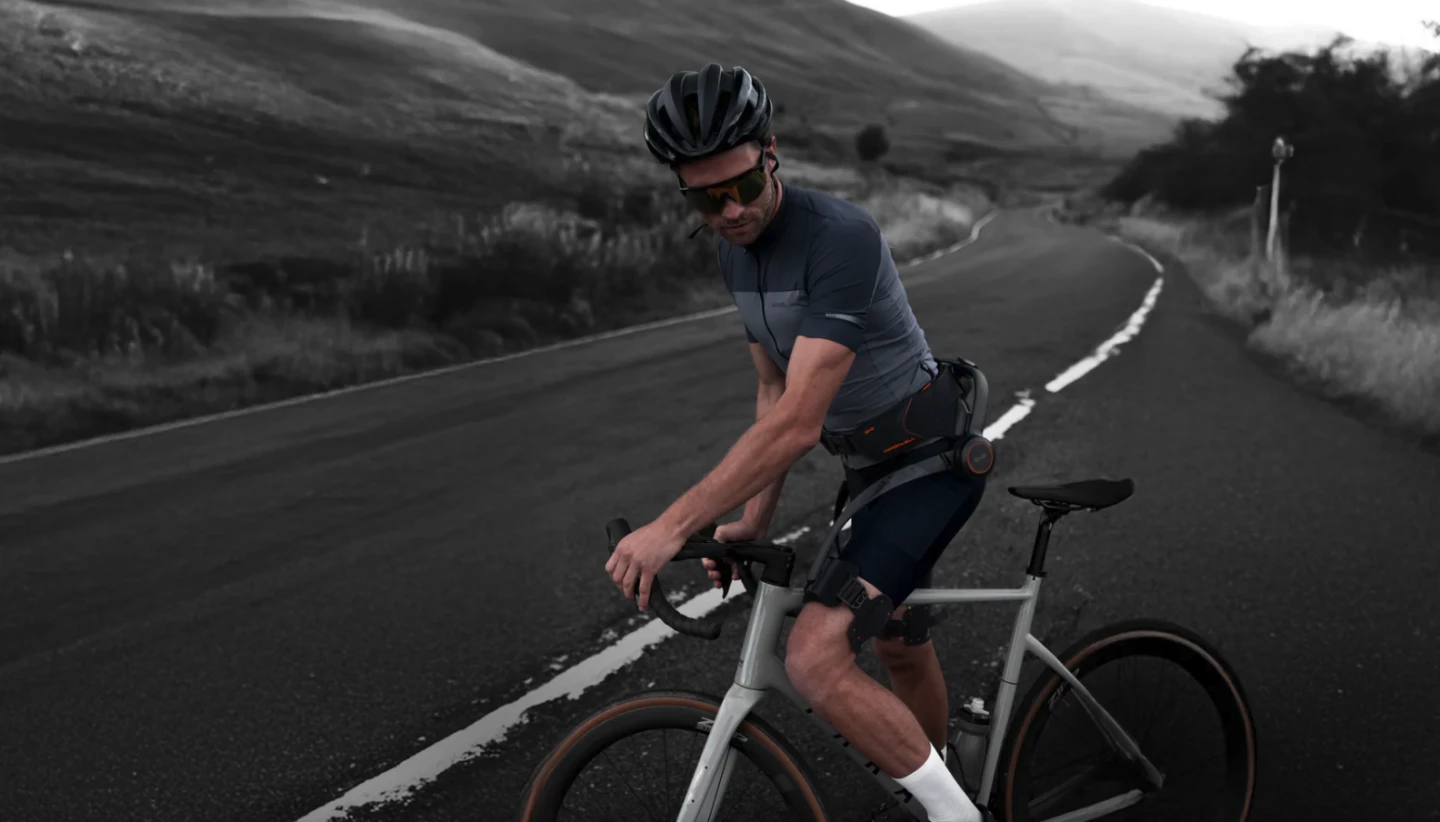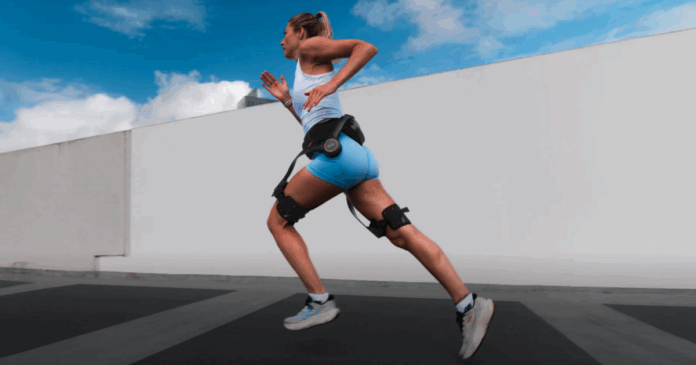“Why should sore knees or tired lungs decide what you can explore?” Hypershell poses the rhetorical question as it launches a definitive answer: the all-new X Ultra performance exoskeleton. Designed for bigger adventures, longer distances and heavier loads, the X Ultra is what the performance exoskeleton pioneer calls its best model to date. The new wearable boosts performance with a full 1,000 watts channeled into your natural gait so you can hike, run, climb, scramble, ski and pedal for up to 65 km (40 miles) while cutting fatigue and feeling fresher when you arrive.
The big knock on performance-assistive tech like electric bikes is the idea that users are taking the easy, lazy way out, a shortcut to avoid the unforgiving gauntlet of hard physical work. But what if you’re ultimately using the tech toward going farther, deeper and more extreme than you could without it, devising more ambitious adventures that still push you to the physical limit? That’s what Hypershell imagines its users doing with its wearable exoskeletons, and that’s the goal for which it optimized the X Ultra in particular.
Hypershell
Despite the fact that the first Hypershell models hit the scene in 2024, the Shanghai tech company has given its unique wearable a rather thorough overhaul to launch its highest-performing model to date. The suite of upgrades centers around a new high-efficiency motor that cranks out 25% more power, pushing peak output from 800 to 1,000 watts (1.34 hp). The M-One Ultra motor also relies on a new thermal management system for improved cooling and optimized winding technology for weight savings without any loss in power or reliability.
As to the ebike comparison, the US federal government limits its definition of “ebike” to those bikes with 750 watts of motor assistance or less, and a majority of US states follow its lead. Beyond that, you’re talking about more heavily regulated mopeds and motorcycles.
The European Union is even stricter. Despite some ongoing discussion about lifting the limit to that same 750 watts, EU countries still keep street-legal ebikes leashed at 250 watts.
So the X Ultra puts 33% more power into your raw legs than a law-abiding American ebike puts into its rear wheel. Or 400% more if you’re in Europe.

Hypershell
Of course, a raw peak power figure looks impressive on paper but is far from the bottom line when snaking your way up and down mountains of sand in the desert. Either this thing helps with actual physical movement, or that 1,000 watts might as well be 250 … or 0.
Here, Hypershell defines the objective as expanding what your body alone can accomplish, and it says that X Ultra users can expect a decrease in muscle load up to 63% on the hip flexors and 25% on the hip extensors when walking. To put more of a user-measurable bottom line to it, Hypershell points to testing that the X Ultra can lower heart rate by up to 22% while walking and 42% while cycling. Accompanying decreases in oxygen consumption are estimated at 20% and 39%, respectively.

Hypershell
The AI-powered X Ultra also fine-tunes output more precisely than older Hypershell exos, adding two all-new profiles for a total of 12 activity/purpose-targeted options. The new Dune and Snow profiles help to optimize assistance for the particularly soft, loose, unstable conditions experienced in sand and snow, respectively. Hypershell also upgrades the running and cycling profiles into Running+ and Cycling+, with Running+ optimizing output for all-out sprints and Cycling+ tailoring output more to stiff climbs.
Beyond those new additions, the X Ultra carries over preexisting options like walking, gravel, uphill, downhill and stair profiles. Users can further adjust output based on eco, transparent, fitness and hyper modes.

Hypershell
A final piece of the new X Ultra equation is a lighter, sleeker construction that cuts weight by 10% compared to the existing 2-kg (4.4-lb) X Pro. Hypershell uses a blend of precision 3D-formed titanium alloy and SpiralTwill 3000 carbon fiber to achieve weight savings that keep the X Ultra at the same flat 4 lb (1.8 kg) as the X Carbon model while packing in more features and an extra 200 watts of motor power.
Those weights are before calculating in the 14.5-oz (410-g) removable 72-Wh battery pack. That pack sizes in at the same capacity and weight as in older Hypershell units, but the X Ultra ekes more total runtime and assistive range out via the increased motor efficiency, more precise human speed and gait mapping, and improved thermal management. The company cites a 25% gain in energy efficiency to a clean 90%. The X Ultra also relies on a battery regen system that captures negative energy produced when slowing down to charge the battery.

Hypershell
The X Ultra offers up to 65 km (40.4 miles) of e-assisted range per battery when cycling and 30 km (18.6 miles) when walking. While the X Pro was quoted at 35 walking kilometers (21.7 miles) per charge when we last looked at it, that’s the range for the two included batteries; the range per battery is 17.5 km (10.9 miles), so the X Ultra has over 70% more range.
We’re a little skeptical Hypershell has raised the range bar that dramatically with just motor and algorithm tweaks, but that’s the company’s claim, anyway. Your mileage may vary … quite literally.
The X Ultra also comes with two batteries, doubling those estimates to 130 km (80.8 miles) cycling or 60 km (37.3 miles) walking if you carry the spare. Top speed checks in at 15.5 mph (25 km/h).
Of course, with all that added performance comes added price. The X Ultra’s US$1,999 price tag is double the current $999 Amazon Prime Day discount price of the X Pro, which runs until Thursday, October 9.
Hypershell narrates its own introduction in the quick video below.
Hypershell X Ultra — The World’s Best Outdoor Exoskeleton to Date
Source: Hypershell
New Atlas receives commission when you purchase through our Amazon links.


